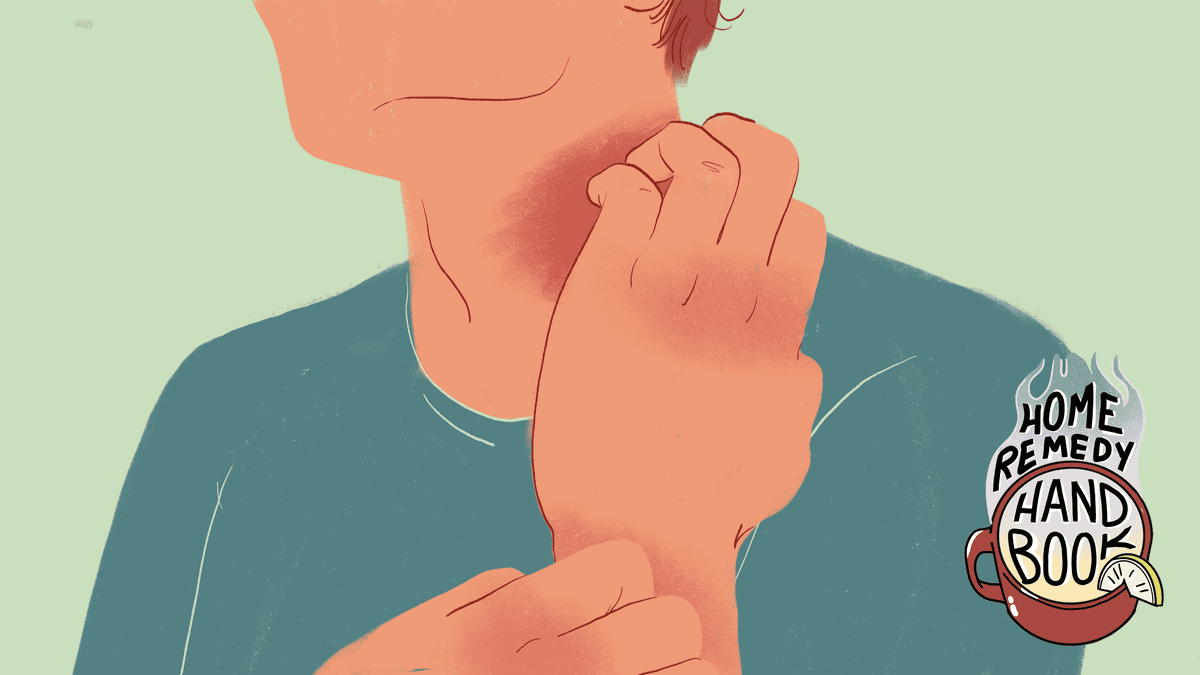Best Ways to Relieve Itchy Skin Without a Prescription

This post is part of our Home Remedies Guide , a review of home remedies from dubious to doctor-approved. Read more here .
Whether your itchy skin is caused by allergies, eczema , or just dryness, there are often many ways to relieve itching at home. If you’re not sure why you’re itching, the first step is to figure it out. Some itchy rashes are contagious, while others may be a sign of more serious conditions. But once you know your diagnosis, the itch may still be there to torment you. Here are a few things to try at home.
Keep your skin hydrated
Dry skin can feel itchy even if there is no medical indication. And if you have a skin condition that makes you prone to itching, dry skin can make itching worse.
So one of the first line home remedies that dermatologists suggest is to simply stay hydrated. An alcohol-free, hypoallergenic moisturizer is what the American Academy of Family Physicians recommends for daytime use. At night, they say, take Vaseline or lubricating cream. Plain old Vaseline fits the bill.
Keeping the air in your home moist can also help, so consider a humidifier if the air is dry. Staying hydrated by drinking plenty of water won’t hurt either. After showering, gently pat skin dry and apply moisturizer.
Avoid skin irritants
While your skin is itchy, you should avoid things that can irritate your skin and prolong itching. This is why simple, hypoallergenic moisturizers are recommended. Fragrances and fancy active ingredients can sometimes be more of an annoyance than a cure. (Speaking here from experience: no matter how many people tell you that lanolin is soothing, you might just be allergic to lanolin.)
Even regular bathing can cause skin irritation. The American Academy of Dermatology recommends limiting baths and showers to 10 minutes and using warm rather than hot water. The AAFP suggests using a mild, unscented, hypoallergenic soap and washing your entire body with it only twice a week. (They say you can wash your armpits and groin daily, but the rest can wait.)
Clothing can also irritate the skin, so consider wearing loose-fitting cotton clothing and avoiding wool and synthetics. Silk is also good for the skin if you can get it.
Try an oatmeal bath
Baths with oatmeal soothe the skin. AAD says they can be especially soothing for raw or weeping skin like sunburn, chickenpox and poison ivy. You want colloidal oatmeal, which means it’s very finely ground and absorbs water easily. You can buy colloidal oatmeal products, including bath sachets or oatmeal-based lotions.
DermNet reports that a cup of colloidal oatmeal (ground in a food processor) is usually sufficient for a regular sized bath. Use warm water as hot water can cause irritation.
Instead of soaking your entire body in oatmeal, you can apply oatmeal to a specific area of your body by making an oatmeal bag out of an old pantyhose leg. Wet oatmeal and squeeze it onto the area of skin you are trying to treat.
Keep cool and comfortable
Extreme temperatures can increase itching and make dry skin even drier, so wrap up when you go out in the cold and try not to spend too much time in the heat. Wash your hands in cool water instead of hot water as much as possible.
Sweat can also irritate dry or itchy skin, so be sure to change your sweaty clothes as soon as possible. This is another good time to take a shower (soap only when needed) and apply moisturizer soon after.
Scratching an itchy rash can make it worse, but if you can’t avoid scratching entirely, the AAFP recommends relieving itching by rubbing your skin with your palms rather than your nails. Short and clean nails will reduce the damage you can cause from an unintentional scratch.
And finally, for a little treat, consider storing your moisturizer in the fridge. Even though your body heat will warm the moisturizer once it’s on your skin, the first application is soothingly cool.